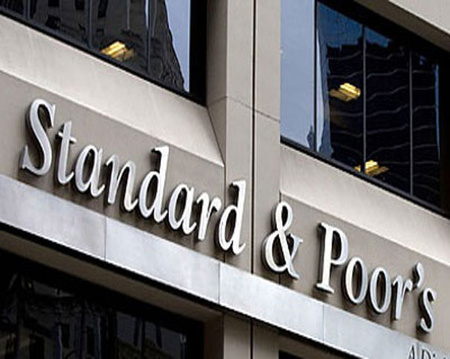Baku, Azerbaijan, June 4
By Elena Kosolapova - Trend: Standard & Poor's Ratings Services had revised its outlook on Kazakhstan-based financial institution, JSC AsiaCredit Bank, to positive from stable, the rating agency reported on June 4. The agency affirmed its short- and long-term counterparty credit ratings at 'B-/C'.
At the same time, S&P raised its Kazakhstan national scale rating on the bank to 'kzBB' from 'kzBB-'.
"The rating actions reflect our view that AsiaCredit Bank's loss absorption capacity will likely increase if it continues to receive capital injections from its owner proportionate with its asset growth. This is assuming that it keeps asset quality under control and increases its currently low provisions," S&P said.
The ability of the main owner, a Kazakh businessman, to inject 8 billion tenge ($53 million) in 2013 after delaying capital injections on two occasions in 2011-2012, gives more confidence in the bank's future capital growth, which is crucial for its rapidly growing franchise. Equally important, S&P considers that the bank is gradually adopting a more prudent and predictable approach to capital management.
If the bank's future capital policy, philosophy, and growth rates differed from the current assumptions, or if the owner's capacity and willingness to inject equity to support asset growth diminished, S&P could take a more negative view of the bank's prospective solvency.
AsiaCredit Bank's bottom-line profitability remains moderate, due to significant investments in the franchise. Consequently, profitability improvements lag loan portfolio expansion. S&P expects the return on assets to decline to about 1 percent in 2014 from 1.4 percent in 2013, which is lower than peers'.
The ratings on AsiaCredit Bank reflect the 'bb-' anchor, which is the starting point for rating a bank operating primarily in Kazakhstan, as well as AsiaCredit Bank's weak business position, adequate capital and earnings, moderate risk position, average funding, and adequate liquidity, as the criteria define these terms. The stand-alone credit profile (SACP) is 'b-'.
The ratings also reflect the reduction of loan concentrations to individual borrowers and the construction and real estate sectors. Among the weaknesses S&P sees are AsiaCredit Bank's modest competitive position in the Kazakh banking sector, its untested growth strategy over a full economic cycle, low risk-adjusted returns, and high funding concentrations.
The positive outlook reflects that the agency could upgrade AsiaCredit Bank over the next 12 months if further capital injections allow it to improve its loss absorption capacity alongside asset growth, while maintaining asset quality and building provisions. S&P may raise the ratings if the bank receives the expected 8 billion tenge capital injection in 2014, while loan growth does not exceed its target. S&P would also consider whether management has demonstrated the ability to manage rapid growth without significant deterioration of asset quality, adopt a more conservative provisioning policy, and continue the bank's business and geographic diversification. Therefore, the agency would revise its assessment of capital and earnings to strong from adequate if the risk-adjusted capital ratio (before adjustments for diversification) stays comfortably above 10 percent throughout the forecast horizon (2014-2015).
S&P could revise the outlook to stable if, contrary to the expectations, AsiaCredit Bank's loss absorption capacity reduced. This could occur, for example, because of delayed or insufficient shareholder capital increases, faster credit growth than planned, or more rapid deterioration of asset quality and therefore significantly higher provisions than we currently anticipate. This would lead to the risk-adjusted capital ratio falling to below 10 percent throughout the forecast horizon. The agency could also take a negative rating action if the bank experienced a liquidity shortage, such as following the exit of large depositors, which is not the base-case scenario, however.






